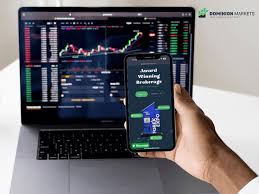How to Start Forex Trading A Comprehensive Guide for Beginners 1938759516

How to Start Forex Trading: A Comprehensive Guide for Beginners
Forex trading, or foreign exchange trading, is one of the most exciting and potentially lucrative financial markets. With a daily trading volume exceeding $6 trillion, it offers numerous opportunities for those looking to invest. Yet, as thrilling as it may be, achieving success in forex trading requires knowledge, discipline, and a well-thought-out strategy. In this guide, we will explore how to start forex trading, providing you with essential steps and resources, including a look at how to start forex trading Forex Brokers in Argentina for those in the region.
Understanding Forex Trading
Forex trading involves buying and selling currency pairs in a global marketplace. Unlike traditional stock markets, forex operates 24 hours a day, five days a week, across various time zones. This continuous atmosphere allows traders to execute trades at any time of the day or night. The goal of forex trading is to exchange one currency for another with the expectation that the price will change in your favor over time.
Key Terms to Know
- Currency Pair: The quotation of two different currencies, where one currency is quoted against the other. For example, EUR/USD represents the euro against the US dollar.
- Pip: The smallest price move in a currency pair’s exchange rate, typically 0.0001 for most pairs.
- Leverage: The ability to control a larger position with a smaller amount of capital. For example, a leverage of 100:1 means that for every $1 you invest, you can control $100.
- Spread: The difference between the buying price (ask) and the selling price (bid) of a currency pair.
Step 1: Educate Yourself
Before diving into forex trading, it’s crucial to acquire a strong foundational knowledge of how the market operates. Many resources are available, such as online courses, webinars, blogs, and books. Look for reputable sources that explain trading principles, market analysis, technical indicators, and economic factors affecting currency movements. Some recommended books include:

- “Currency Trading for Dummies” by Kathleen Brooks and Brian Dolan
- “Trading in the Zone” by Mark Douglas
- “Technical Analysis of the Financial Markets” by John J. Murphy
Step 2: Choose a Reliable Forex Broker
Once you’ve built a solid understanding of forex trading, the next step is to select a broker that meets your trading needs. Consider the following factors when choosing a broker:
- Regulation: Ensure the broker is regulated by a reputable financial authority to protect your investments.
- Trading Platform: Look for user-friendly trading platforms with advanced features, charting tools, and mobile access.
- Transaction Costs: Compare spreads, commissions, and fees across different brokers to find a cost-effective option.
- Customer Support: Check the availability and responsiveness of customer service through various channels.
For traders in Argentina, there are specific Forex Brokers in Argentina that cater to local regulations and market conditions.
Step 3: Open a Demo Account
After selecting a broker, it’s advisable to open a demo trading account. A demo account allows you to practice trading without risking real money. You’ll have access to the same trading platform and market conditions as live trading, enabling you to test strategies and familiarize yourself with the broker’s interface. Use this opportunity to refine your skills, learn how to read charts, and understand order types before trading with real funds.
Step 4: Develop a Trading Plan
A well-structured trading plan is essential for success in forex trading. Your plan should outline your trading goals, risk tolerance, and strategies. Here are some key elements to include in your trading plan:

- Market Analysis: Determine whether you’ll use technical analysis, fundamental analysis, or a combination of both.
- Risk Management: Define how much capital you’re willing to risk on each trade and set stop-loss orders to protect your investments.
- Trade Entry and Exit Strategies: Specify your criteria for entering and exiting trades based on your analysis.
Step 5: Start Trading Live
Once you feel confident in your abilities and have tested your strategies using a demo account, you’re ready to start trading with real money. Start with a small amount that you can afford to lose, and gradually increase your position sizes as you gain experience. Remember to maintain discipline and stick to your trading plan, even when the market becomes volatile.
Step 6: Monitor Your Performance
After you start trading live, it’s crucial to keep track of your performance. Maintain a trading journal where you log every trade, including entry and exit points, the reasoning behind your trades, and the outcomes. Analyze your mistakes and successes to identify patterns and refine your strategies continuously. Regular self-assessment will help you improve as a trader and adapt to changing market conditions.
Step 7: Keep Learning
The forex market is constantly evolving, and staying informed about economic developments, geopolitical events, and market trends is vital. Engage with online trading communities, attend webinars, and read the latest financial news to enhance your understanding. The more you learn, the better equipped you will be to make informed trading decisions.
Conclusion
Starting your journey in forex trading can be both exciting and intimidating. However, by following these steps and committing to continuous learning, you can navigate the complexities of the forex market. Remember, trading is not just about making profits; it’s also about managing risks and maintaining discipline. With dedication and a solid understanding of the market, you can work towards achieving your trading goals.

